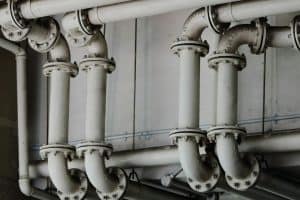Key Takeaways:
- Learn about the latest technologies in pipelining.
- Discover the benefits of using modern pipelining methods.
- Understand how these technologies can save time and costs.
- Get insights into the environmental impact of traditional and new pipelining techniques.
Introduction
Modern pipelining technologies have revolutionized the way we repair and maintain piping systems. Advances in cured-in-place pipe (CIPP) methods and pipe bursting have led to more efficient and less disruptive solutions. These technologies help ensure minimal environmental impact, which is crucial in today’s context of sustainable development.
Historically, pipeline repair involved extensive excavation, leading to long downtimes and significant inconvenience for residential and commercial operations. Modern pipelining technologies have drastically changed this scenario, making pipe repair a more manageable and less intrusive. This shift ensures communities face less disruption and businesses continue operating with minimal interruptions. As urban infrastructure ages, the demand for convenient and effective pipelining solutions has never increased.
Types of Modern Pipelining Technologies
Several advanced technologies are currently in use in the pipelining industry, including:
- Cured-in-Place Pipe (CIPP): A trenchless rehabilitation method that inserts a resin-coated liner into the damaged pipe. Once in place, the liner is inflated and cured, forming a new, seamless pipe within the old one. This method is particularly useful in urban areas where excavation could be more practical.
- Pipe Bursting: A method for replacing buried pipelines without a traditional construction trench. It involves breaking the old pipe apart while pulling a new one into place. Pipe bursting is highly effective for upgrading old and brittle pipelines to more durable materials.
- Slip Lining: This involves inserting a new pipe inside the existing one to reinforce structural integrity and improve flow capacity. Slip lining is one of the oldest methods of trenchless rehabilitation, and while it has certain limitations in terms of diameter reduction, it remains an effective solution for many applications.
Each technology has advantages and applies to different pipeline issues. Careful assessment and selecting the right technology are crucial for successful pipeline rehabilitation and maintenance.
Advantages of Modern Technologies
These advanced methods offer multiple benefits, including reduced downtime and minimal disruption to surrounding areas. According to scientific research, trenchless methods significantly cut project times compared to traditional dig-and-replace techniques. The non-intrusive nature of these methods means that traffic, landscapes, and daily routines remain largely unaffected during the repair process.
Additionally, the materials used in these methods are often more resilient and longer-lasting than traditional repair options, ensuring that pipelines remain functional for many years without requiring frequent maintenance. This not only reduces the long-term costs associated with pipeline upkeep but also improves the reliability of the infrastructure, making it a preferred choice for municipalities and private entities alike.
Cost and Time Efficiency
Modern pipelining technologies can result in substantial cost savings. These methods reduce labor and material costs by eliminating the need for excavation. Recent studies show businesses can save up to 30% on total project costs by opting for trenchless technologies. Additionally, faster completion times mean less disruption to daily activities and reduced overall project timelines. This efficiency is especially beneficial in densely populated urban areas where lengthy construction projects can cause significant economic and social disruption.
Moreover, less invasive procedures minimize the need for road closures and detours, making life easier for residents and commuters. The financial savings realized from reduced labor and materials can be redirected towards other essential community projects, maximizing the overall benefit for the public.
Environmental Impact
Due to extensive digging and soil displacement, traditional pipelining methods often harm the environment. In contrast, modern techniques like CIPP and pipe bursting significantly reduce the need for excavation and disposal of old materials. This preserves the natural landscape and reduces carbon footprints associated with construction activities. The ability to rehabilitate pipelines without excavation is particularly important in environmentally sensitive areas, where preserving the existing landscape is crucial.
The reduced need for excavation lessens the disturbance to the ecosystem and decreases the likelihood of soil and water contamination, making these methods more environmentally sustainable. By adopting these sustainable methods, the pipeline industry can contribute to broader environmental conservation efforts while maintaining the efficacy and reliability of crucial infrastructure.

